11 Rare Shotguns From the 1900s That Belong in a Museum
The rarest shotguns from the 1900s stand as testament to a time of remarkable innovation. These unique firearms, often crafted with meticulous detail, capture the essence of their era. Their scarcity adds to their allure, making them highly sought after by collectors and museums. For those who appreciate history and craftsmanship, these shotguns are not just relics; they are pieces of living history. Let’s explore why these extraordinary shotguns should be preserved in museums for future generations.
This post may contain affiliate links, which helps keep this content free. Please read our disclosure for more info.
Sjogren Shotgun
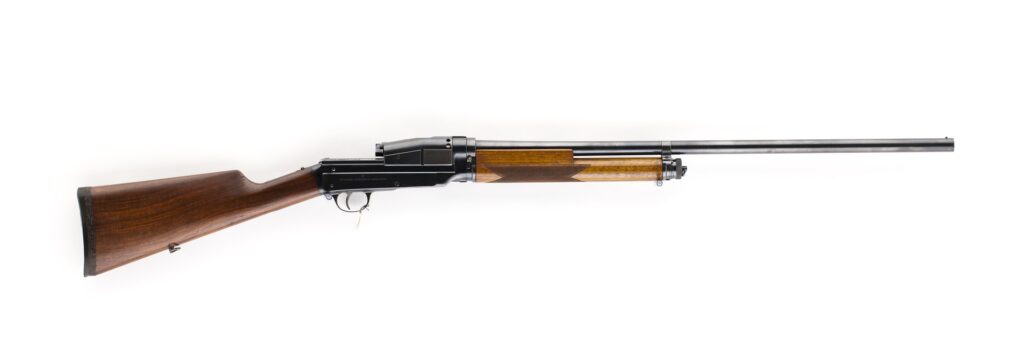
Introduced around 1908–1909, the Sjogren Shotgun was designed in Sweden by Carl Axel Theodor Sjogren and built by AB Svenska Vapen- och Ammunitions Fabriken. What makes this shotgun rare is its inertia-operated semi-automatic system, a mechanism ahead of its time that few shotguns used then. The limited production run of only a few thousand units adds to its scarcity and appeal for a museum setting. Its presence helps tell the story of early shotgun innovation beyond the usual makers.
Its unusual mechanical layout and historic origin give it a story beyond simple hunting use. Museums that showcase early 20th-century firearms technology would benefit from including this shotgun. Its Swedish origin offers a different regional perspective compared with more common American or British models. For a visitor viewing one in a glass case, the Sjogren helps bridge the gap between early and later shotgun mechanisms. Its market value today is estimated at around US$3,000 for a well-conditioned example.
Remington Hammerless Double-Barrel Shotgun

Dating from the turn of the century, around 1900 to 1910, this Remington hammerless double-barrel shotgun represents one of the early hammerless designs in the U.S. Its rarity arises from its age, the limited survival rate of early models, and the fact that hammerless side-by-side shotguns were still a newer approach at the time. One such example is held at the Galt Museum and Archives in Alberta, Canada. The shotgun offers insight into the transition between older hammer-guns and modern shotgun design.
The mechanical and stylistic changes represented by this shotgun help scholars trace shotgun evolution in the early 1900s. Its documented provenance, and the fact that it survived in service or private use-adds to its significance. At a museum display, this gun can anchor interpretation about how sport firearms matured during that era. Its presence alongside more expected items gives visitors a deeper appreciation of design progression. Its estimated market value is typically around US$2,000 to US$4,000 depending on condition and documentation.
Double-Barrel Shotgun
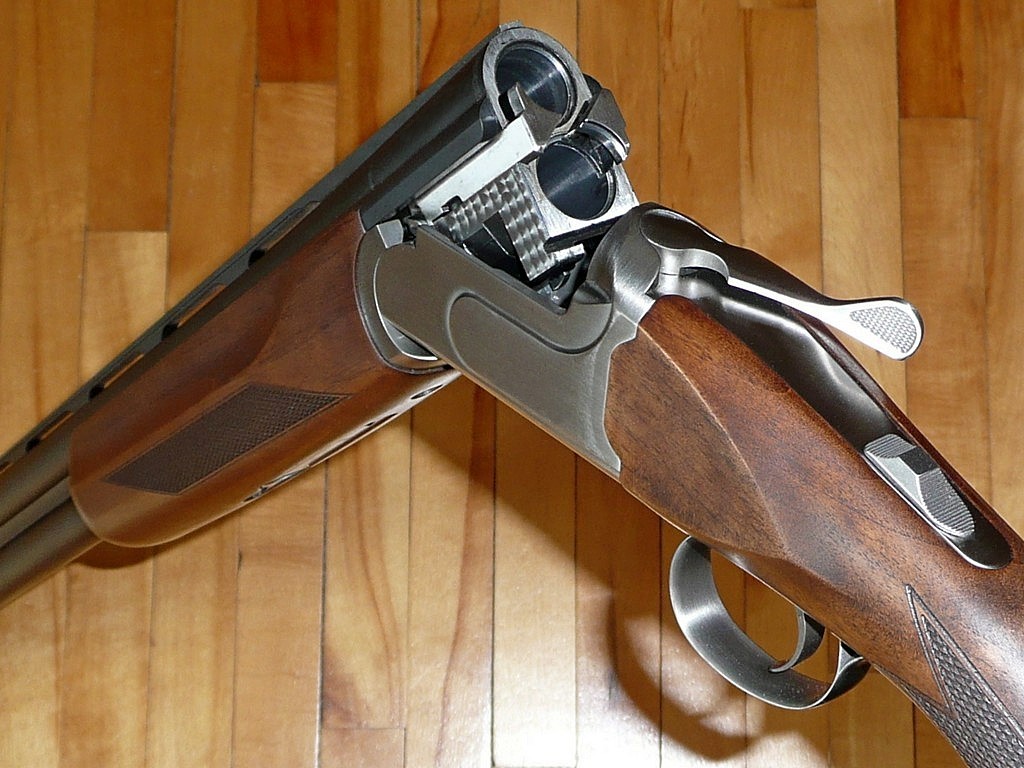
Located in the collection of The Charleston Museum in South Carolina, this double-barrel shotgun is dated around 1900-1910 and marked by Parker Brothers, a well-known maker of sporting firearms. Its rarity stems from its age, condition, and the fact that many such shotguns from that period did not survive or entered less visible private collections. The shotgun is part of the museum’s armoury collection, which showcases historic weaponry from multiple eras, including the early 20th century. For museum audiences, the piece offers a tangible link to sporting and personal gun ownership from a bygone era. It’s a visual anchor for stories of design, ownership, and the social setting of shotguns in that timeframe.
Beyond its basic technical details, this shotgun gives insight into regional gun culture in the U.S. at the early 1900s. The fact that it is preserved in a museum rather than lost or in poor condition adds to its significance. It invites conversation about how sporting arms were crafted, used, and valued at the turn of the century. For a museum display, it grounds more abstract design discussions in a concrete object. That makes it a valuable addition to any collection focusing on the history of shotguns. Its estimated current market value is around US$1,500 to US$3,000, depending on condition and rarity of features.
Ithaca Auto and Burglar Shotgun
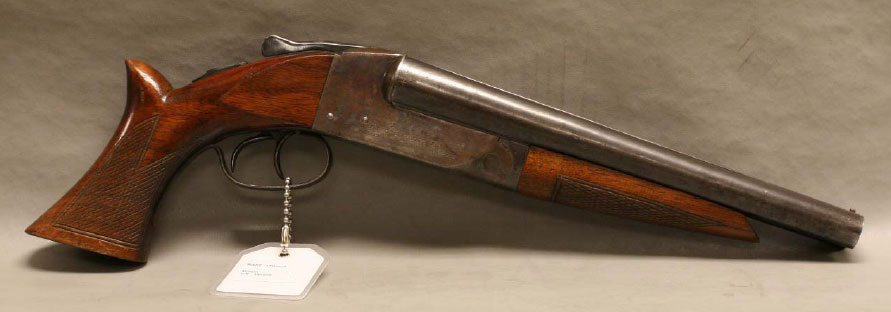
Produced in the early 1920s (specifically around 1921 to 1933), the Ithaca Auto and Burglar Gun was a double-barrel shotgun modified by the Ithaca Gun Company with a pistol grip and short barrels, designed for self-defence or vehicle use. Its rarity comes from the low production numbers, only about 4,000 made, and its unusual design, which blurred the line between shotgun and defensive firearm. For museum visitors, seeing this shotgun offers insight into an early 20th-century shift in how firearms were used and marketed.
Because these shotguns were seldom used for sport or hunting, fewer examples survived in good condition, making museum examples even more valuable. The Auto and Burglar name reflects a historical context of vehicles, city living and self-defence that’s less common among sporting shotguns of the time. The gun’s short barrel and design make it unusual among what one expects in a 1900s shotgun. That oddity adds interpretive value in a museum setting, allowing curators to talk about technological change and regulation. Market data shows some examples have sold at auction for upwards of US$12,000.
Winchester Model 21 Deluxe Grade Side-by-Side

Introduced by the Winchester company in 1930s but based on sporting shotgun work done in the 1900s, the Model 21 in its deluxe grade version is worthy of museum display. Its rarity stems from limited production numbers of the deluxe grades, high-quality materials, fine engraving, and its status as one of the finest American side-by-side shotguns of that period. Museums dedicated to American firearm history often include examples of the Model 21 to illustrate craftsmanship and evolution of shooting sports. The deluxe finish positions it as much an art object as a tool, making it ideal for historical display.
Because the Model 21 was expensive when new and fewer deluxe examples remain, it qualifies as rare. Its use in shotgun sports, field trials and by wealthy shooters adds to its social history. Current market estimates for high-grade deluxe models are around US$8,000 to US$20,000 depending on finishing and provenance.
Hibbard Shotgun given to Annie Oakley
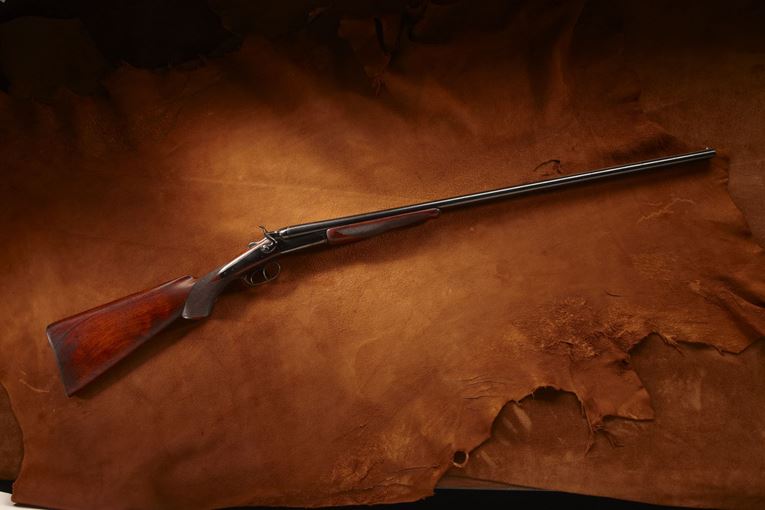
This shotgun, reputedly given by famed markswoman Annie Oakley to a companion during her exhibition years in the late 1800s or early 1900s, sits on display at the NRA National Sporting Arms Museum in Springfield, Missouri. Its rarity comes from its provenance-ownership by a renowned historical figure and its connection to exhibition shooting culture rather than just hunting. The shotgun helps illuminate a lesser-noticed side of firearm history because of the showmanship, performance, and celebrity shooters of the early 1900s.
Beyond its celebrity link, the shotgun helps museum visitors connect with the broader social context of firearms in that era. It reflects how shotguns were used in entertainment and public performance, not just in sport. That change in narrative adds depth to a museum collection that might otherwise focus purely on technical evolution. Considering its age, origin, and association with Annie Oakley, the piece is rare in multiple dimensions. For anyone exploring early 20th-century shooting culture, this shotgun offers a rich visual and historical cue. The estimated market value for a piece with such provenance could run US$5,000 to US$10,000, depending on condition and documentary support.
Browning Auto-5 Early Belgian Production
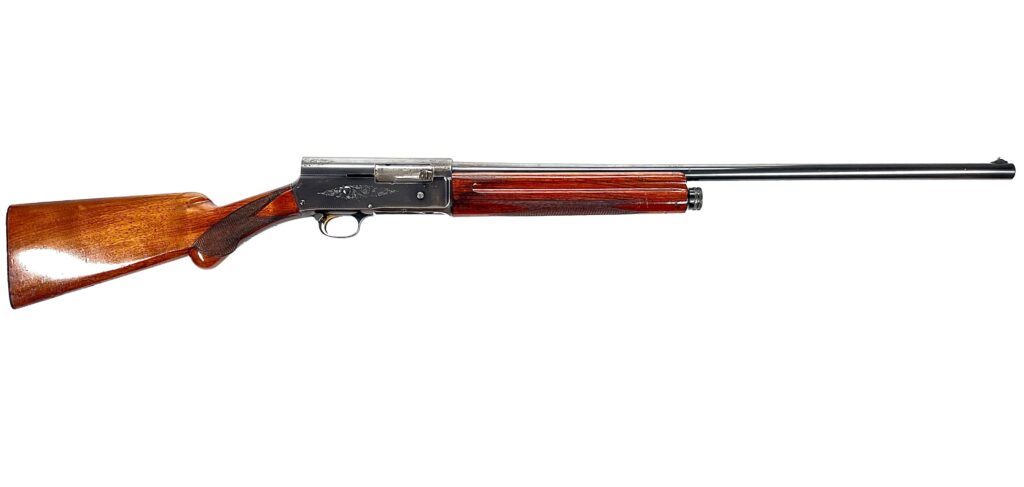
The Browning Auto-5 originally appeared in the early 1900s and this Belgian-made early production is of special interest for display. The rarity comes from its age (very early production units from Belgium), the historical significance of being one of the first semi-automatic shotguns, and survival in good condition. An example is known to be exhibited at the NRA National Firearms Museum. For museum-goers, this shotgun shows how automatic action entered shotguns and changed expectations for sport and field arms. Its humpback receiver design gives it a distinctive appearance which helps in display interpretation.
Many hunters used this model for decades, but early issues are scarcer due to wear and shifting accessories or repairs over time. The Belgian-made version marks a chapter before U.S. production took over, making it a transitional piece in global shotgun history. As part of an exhibit, this shotgun could lead into discussions about John Moses Browning, his designs, licensing and industrial arms production. Its length of service and adaptation to field use add layers of history beyond technical. The estimated market value today is roughly US$4,000 to US$8,000. novelty.
Lefever Nitro Special
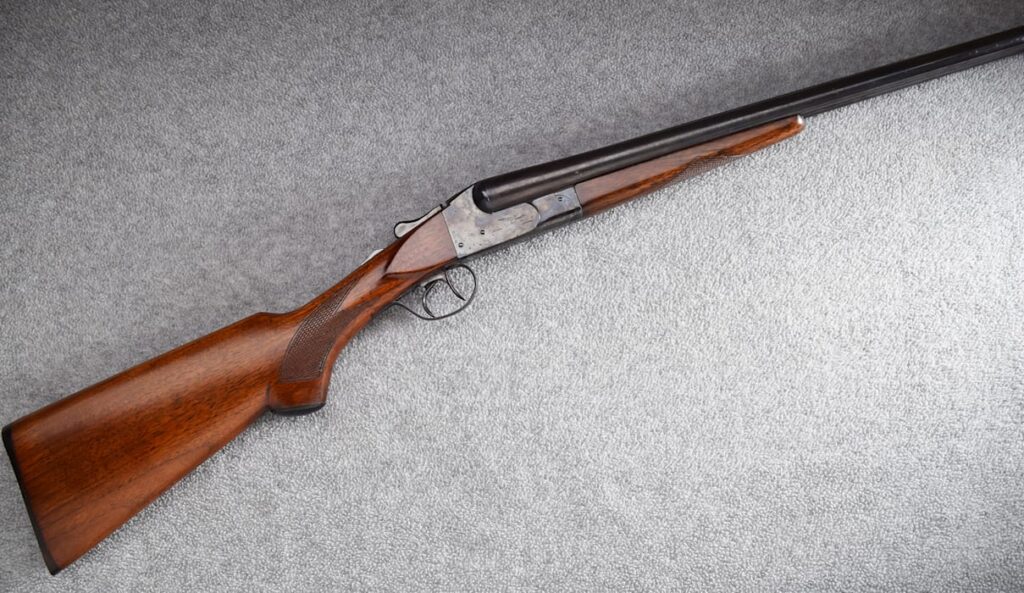
Produced between 1900 and the 1920s, the Lefever Nitro Special was one of the first double-barrel shotguns designed to withstand modern smokeless powder. Its rarity comes from the fact that only a limited number were produced, and many were used heavily, making surviving examples scarce. The shotgun’s durability and design advancements made it popular in its time, but few have remained in excellent condition. Museums, such as the National Firearms Museum, often feature this model for its role in the transition to modern shotgun technology.
The Lefever Nitro Special is distinguished by its solid frame and the use of steel barrels designed for smokeless powder, which was a technological leap forward at the time. This model helped set the standard for future shotguns, combining reliability with performance. Its robust design made it popular among hunters and sport shooters, though only a few have survived in good condition today. The historical impact of this shotgun makes it a key piece in understanding the development of American hunting firearms. Its estimated market value is typically US$300 to US$600, though high-grade examples may exceed that.
Winchester Model 12
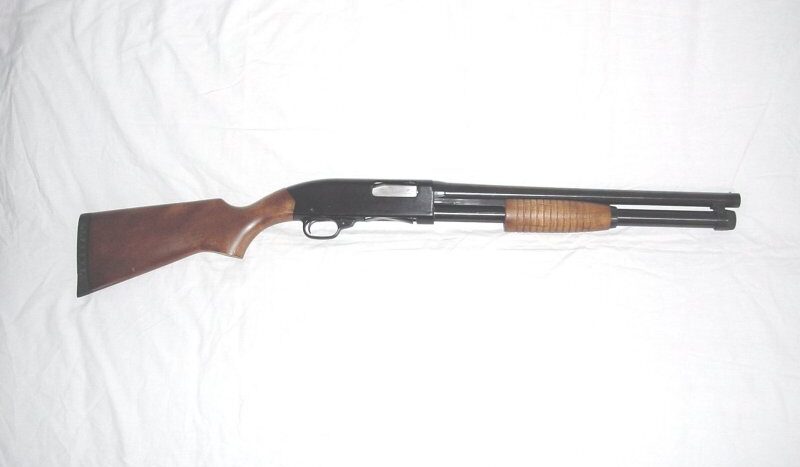
The Winchester Model 12, first released in 1912, was one of the most successful pump-action shotguns ever made, with a production run lasting until 1964. What makes it rare are the early models, particularly those produced in the first decades of its release, which are harder to find in excellent condition. The National Firearms Museum holds a special early edition of this shotgun as part of their collection. Its role in shaping the pump-action shotgun market and its widespread use in both military and civilian contexts makes it a significant piece of American firearm history.
The Model 12 was known for its smooth action and reliability, qualities that made it popular for hunting and competition shooting. Its success lay in the mechanical design, which combined durability with ease of use. The early models are particularly valuable due to their historical context and the fact that many were worn out through heavy use. The shotgun’s versatility also saw military use during both World Wars, adding another layer of historical importance. Early, well-preserved models of the Model 12 can range from US$1,500 to US$4,000 depending on condition and rarity.
Fox Sterlingworth Shotgun

The Fox Sterlingworth, introduced in the early 1900s, was known for its craftsmanship and affordability, making it one of the most popular side-by-side shotguns of its time. Its rarity comes from its high-quality construction combined with the fact that only a limited number were produced in the early 1900s. Examples of this shotgun can be found in collections like the Springfield Armory Museum, where its impact on the shooting sports industry is highlighted. The Sterlingworth is recognized for its reliability and performance in the field, and it was a favorite among hunters. Its classic design and place in firearms history make it a perfect piece for museum displays.
The Fox Sterlingworth is made with a boxlock action, which was a significant feature of many shotguns in the early 20th century. The shotgun’s durability and elegant craftsmanship helped it become a staple in American hunting circles, though the early versions are harder to come by today. Many of these shotguns were used extensively, which contributes to their rarity in pristine condition. For collectors, this shotgun represents a key moment in the development of side-by-side shotguns. Well-preserved Fox Sterlingworth shotguns typically range from US$1,000 to US$3,000, with higher values for high-grade models or unique variants.
This article originally appeared on Avocadu.
